The systematics of piranhas is undisputedly one of the most complicated and complex sub-disciplines of fish science (ichthyology). There are several reasons for this. Piranhas are extremely common and conspicuous fish that are very easy to catch. As early as the 18th and 19th centuries, several species were described and named, often based on individual specimens and characteristics that we now know are unsuitable for distinguishing species. In the course of their lives, piranhas also change their body shape and coloration considerably. Genetic studies (DNA) have also shown that there are more species than previously thought, many of which have not yet been scientifically studied. As a result, in many cases a living piranha, whose location is usually either completely unknown or only vaguely specified, can only be assigned to one of the currently 44 generally accepted species, which are divided into 5 genera, with great reservation.
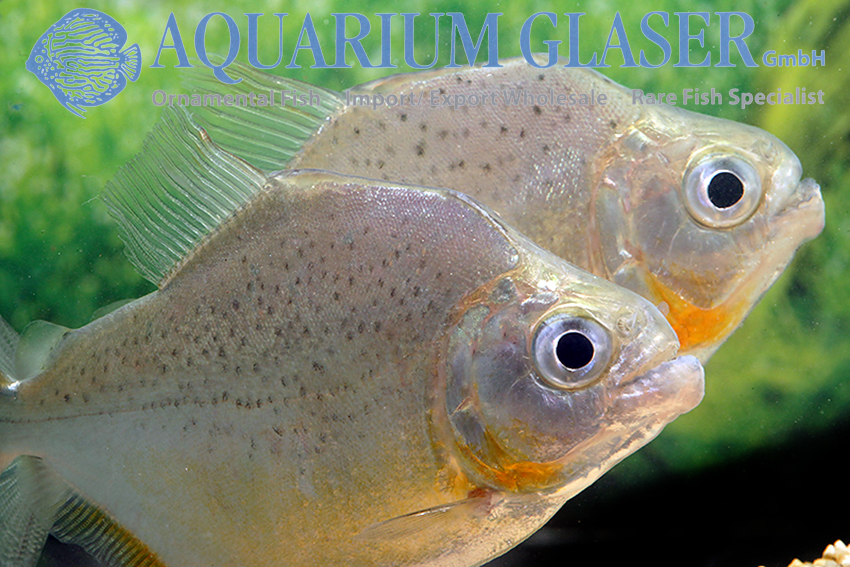
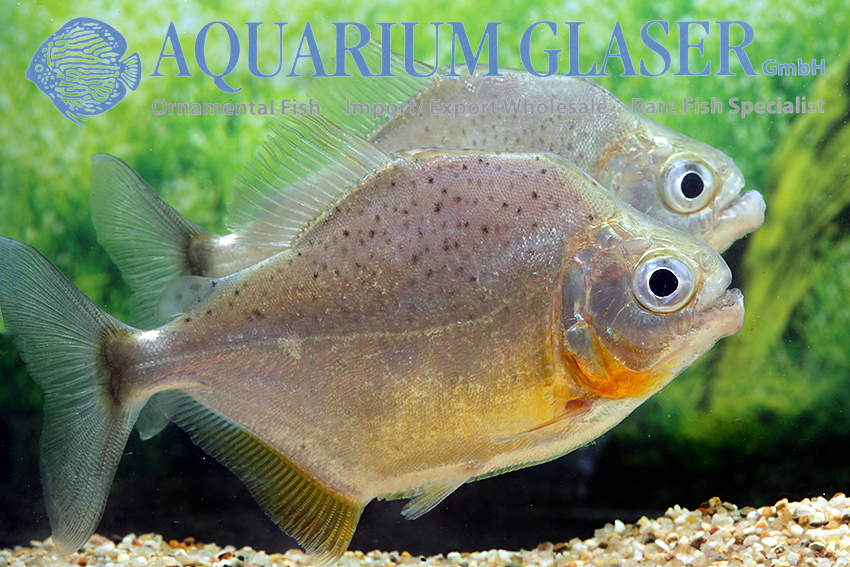
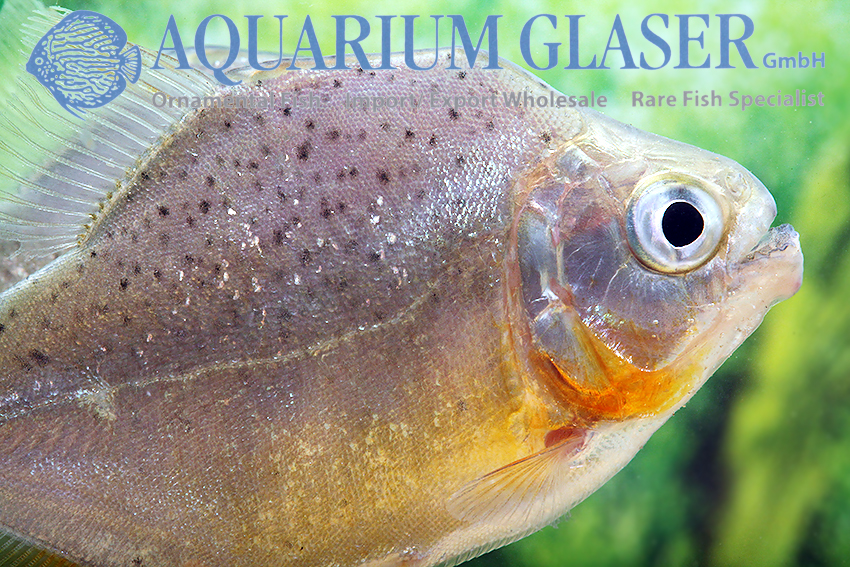
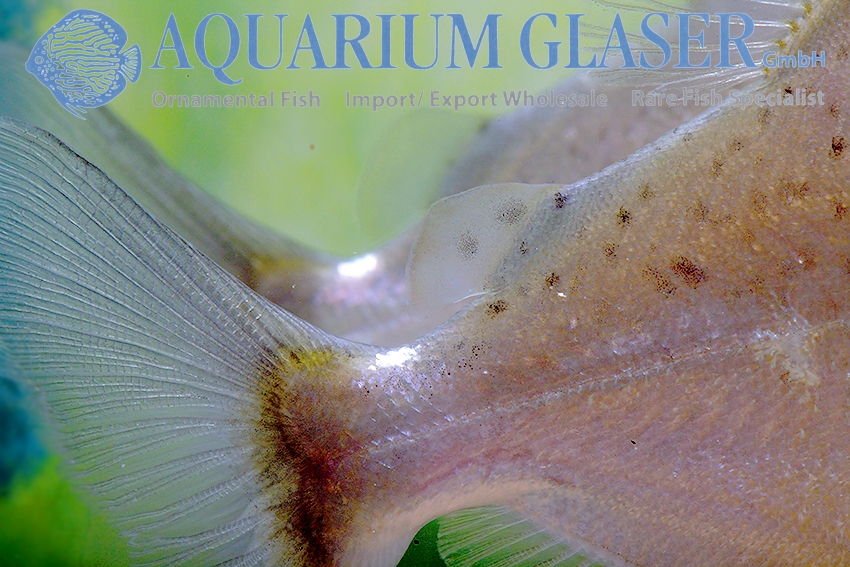
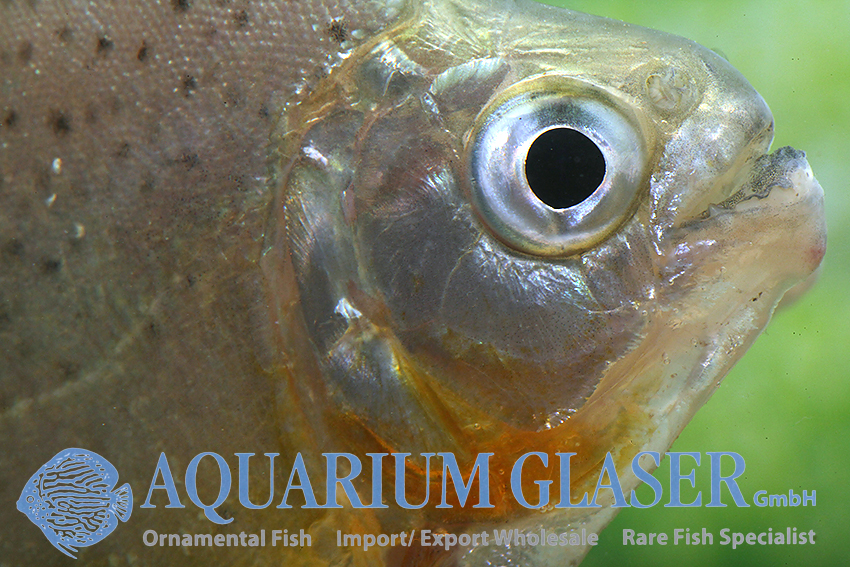
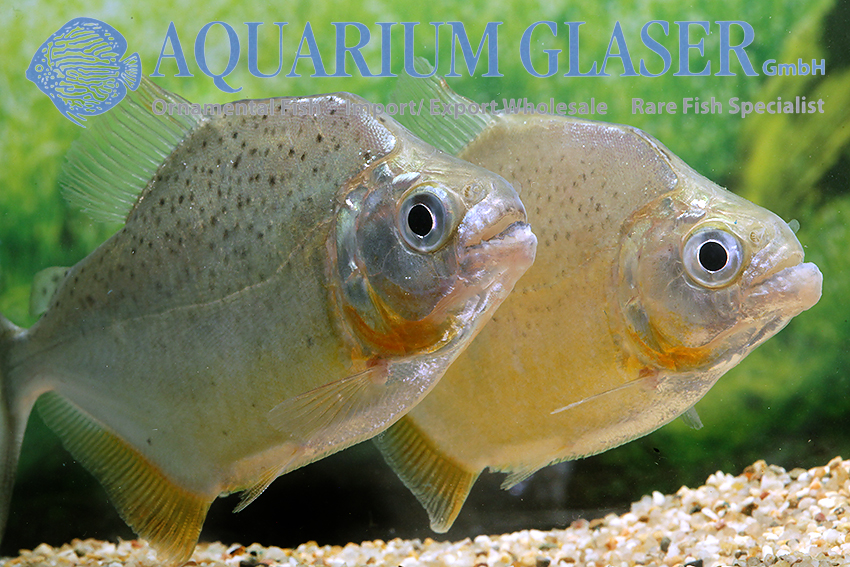
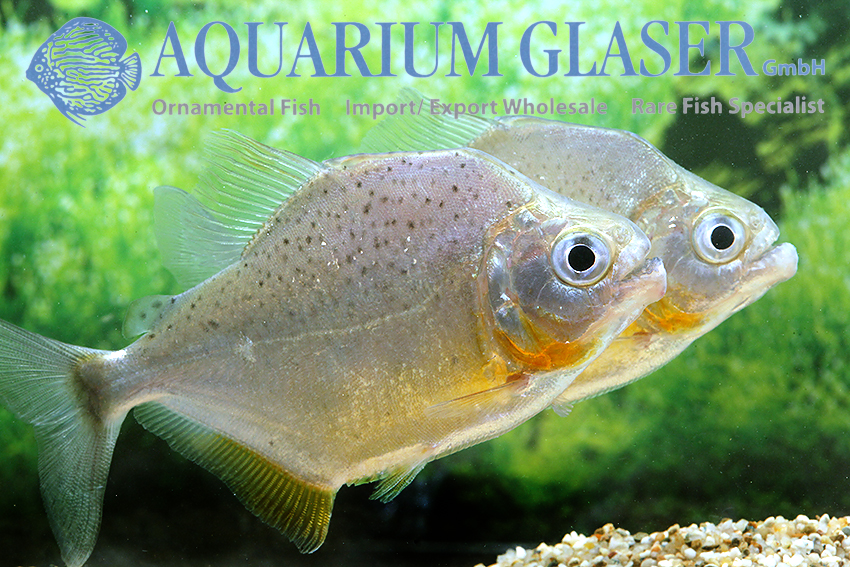
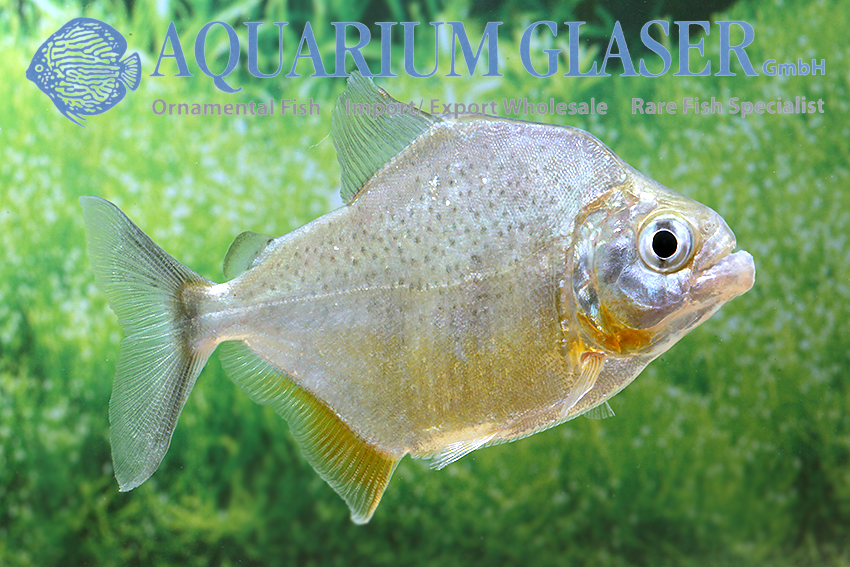
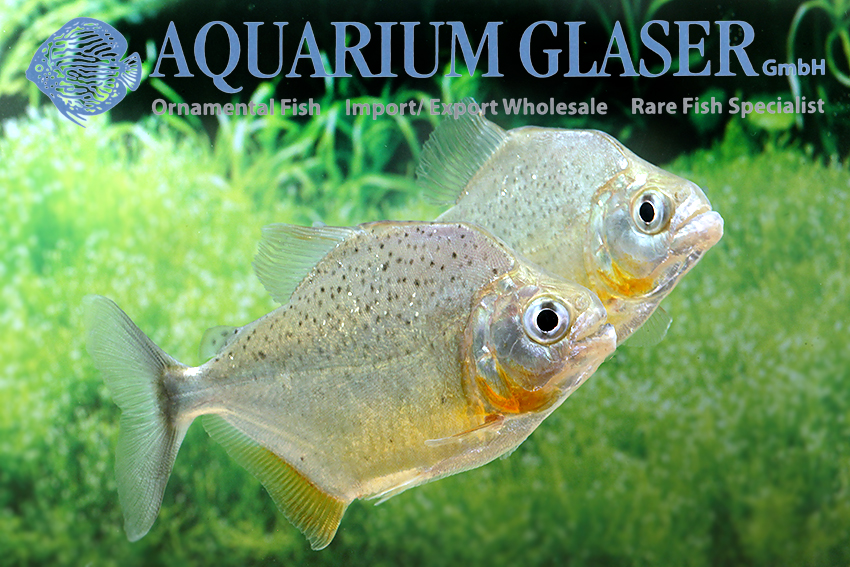
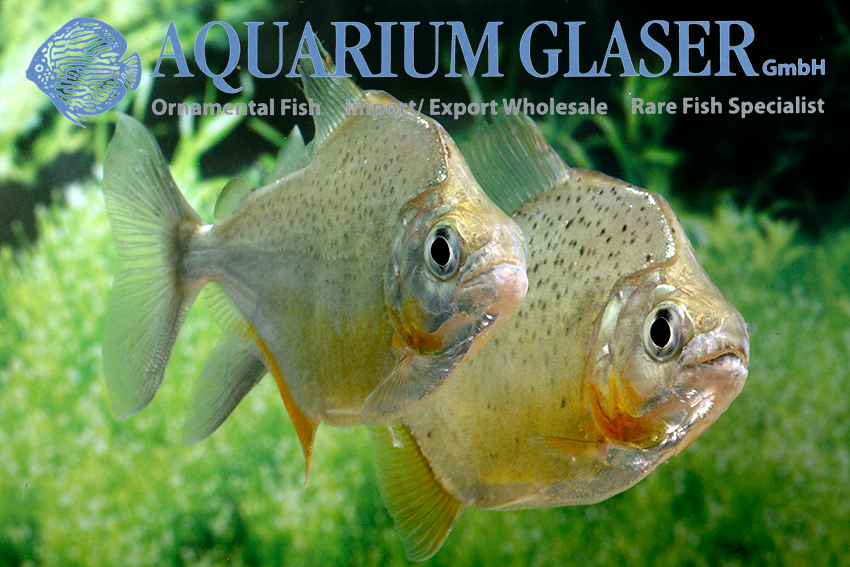
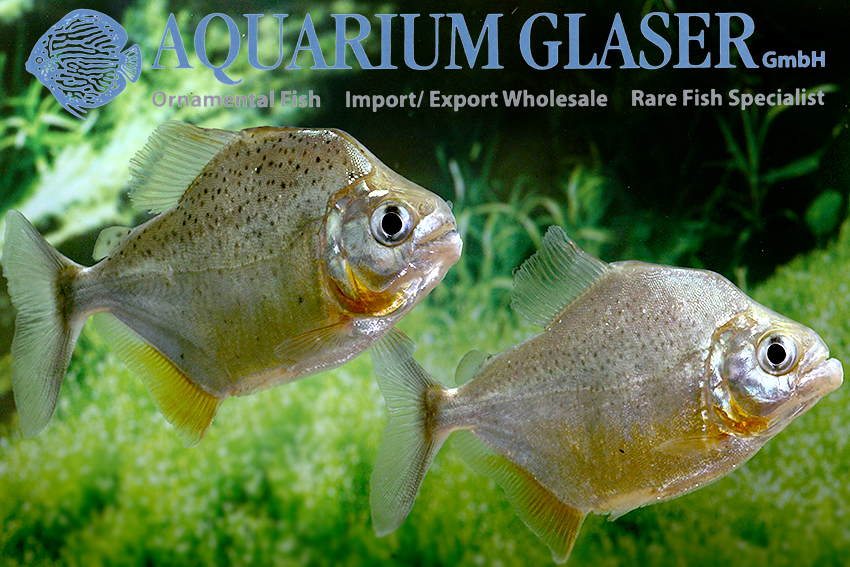
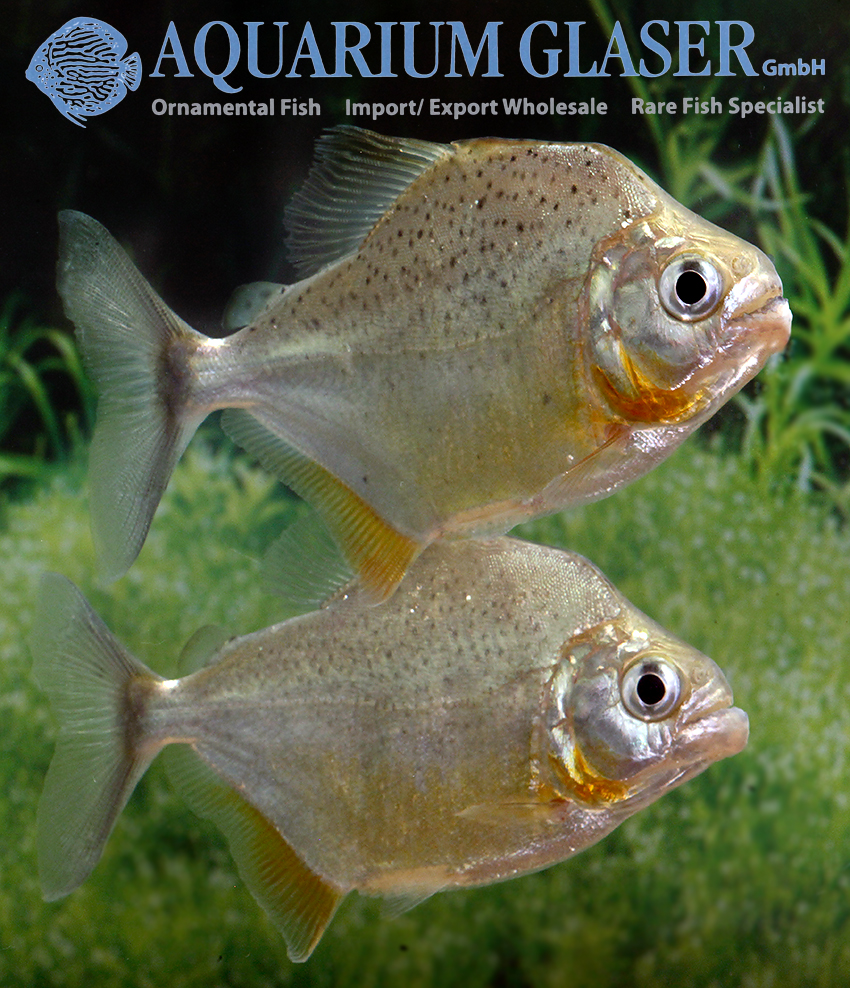
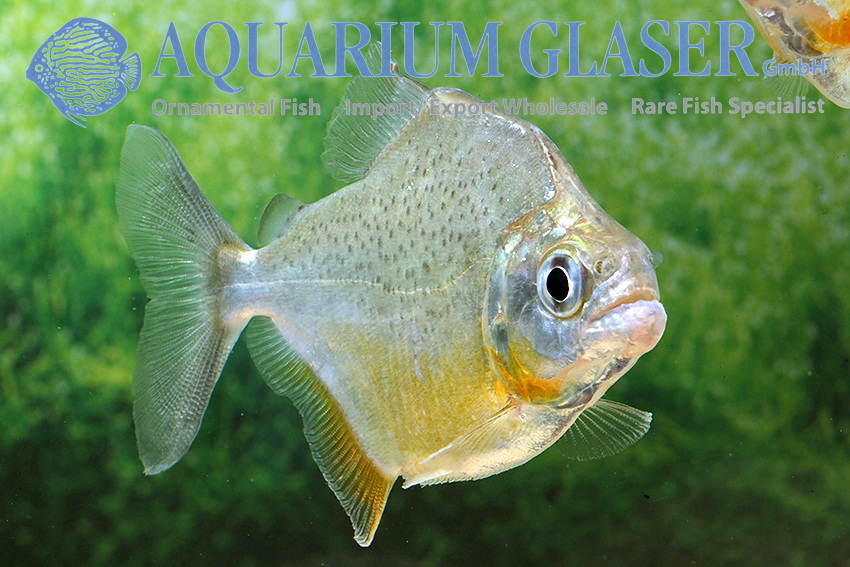
The coloration of the caudal fin has proven to be a very reliable characteristic in piranha identification. In the size classes 5-25 cm – and these are the sizes usually encountered in aquaristics – the coloration of the caudal fin appears to be species-specific. In smaller animals it is often not yet pronounced, in larger ones the caudal fin can become completely black.
The combination of V-shaped markings in the caudal fin, which has no dark edge, a relatively deep body and a comparatively short head makes it very likely that the beautiful piranhas we have from time to time stocked from Brazil belong to the species Serrasalmus eigenmanni. However, this species name probably conceals several species in reality. We do not even want to completely rule out the possibility that our animals are a Pristobrycon species that has not yet been scientifically identified. The silver-colored fluorescent spot on the caudal peduncle is particularly peculiar in our animals.
Serrasalmus species are solitary animals, unlike the well-known Pygocentrus piranhas. Please do not be tempted by the photos to try keeping them in pairs. This only works for a few hours, then the shreds fly. This is to be understood literally. S. eigenmanni should grow to around 20 cm in length and develop long fins during the spawning season.
For our customers: the animals have code 291605 on our stocklist. Please note that we only supply the wholesale trade.
Text & photos: Frank Schäfer




